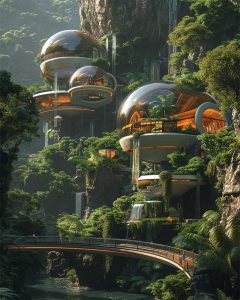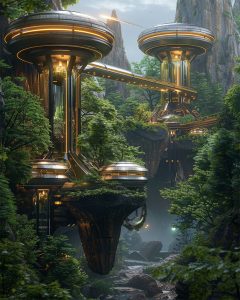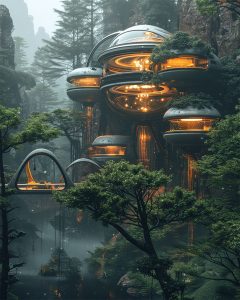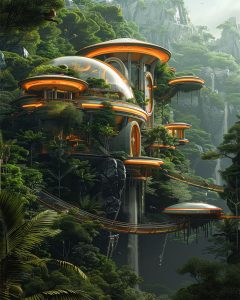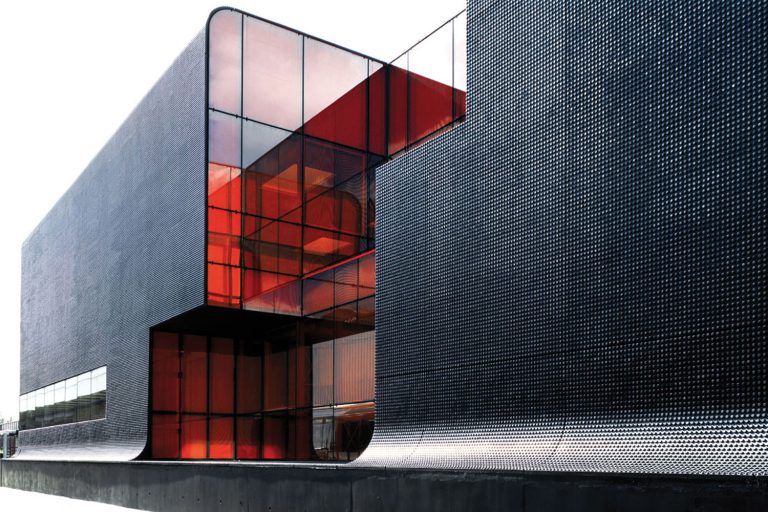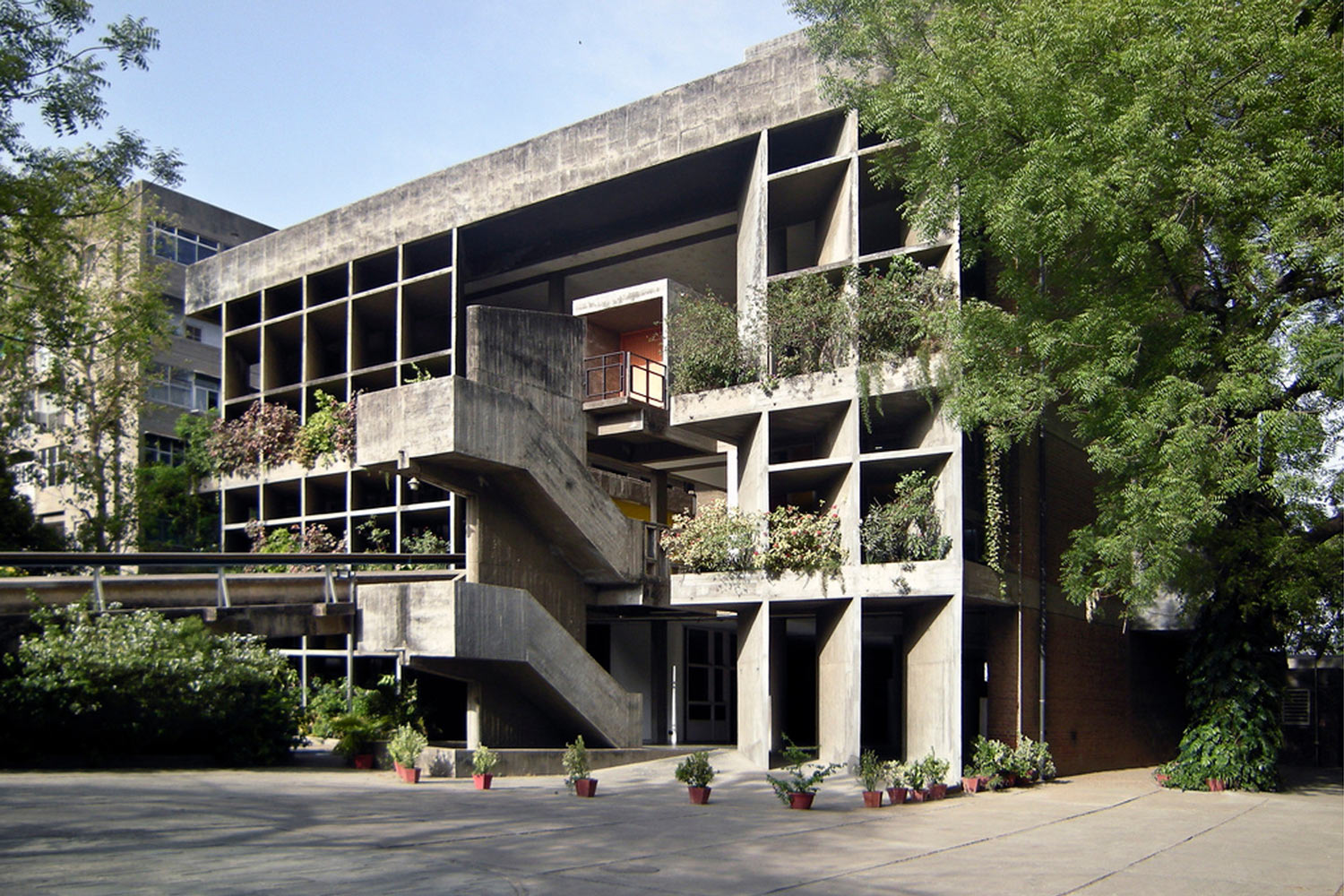
Yuli Sri Hartanto has designed Bubble Haven, an AI-generated concept designed for South Yogyakarta, Indonesia. The project aims to redefine the relationship between humans and the environment by promoting sustainable living and environmental stewardship. The complex is located on mountain cliffs adjacent to tropical forests.
Bubble Haven’s unique architecture is characterized by its bubble-shaped design, which was inspired by organic shapes found in nature. The bubbles’ fluidity and grace offer residents a distinctive living experience, and each bubble is designed to optimize natural light and ventilation for a comfortable and sustainable environment.
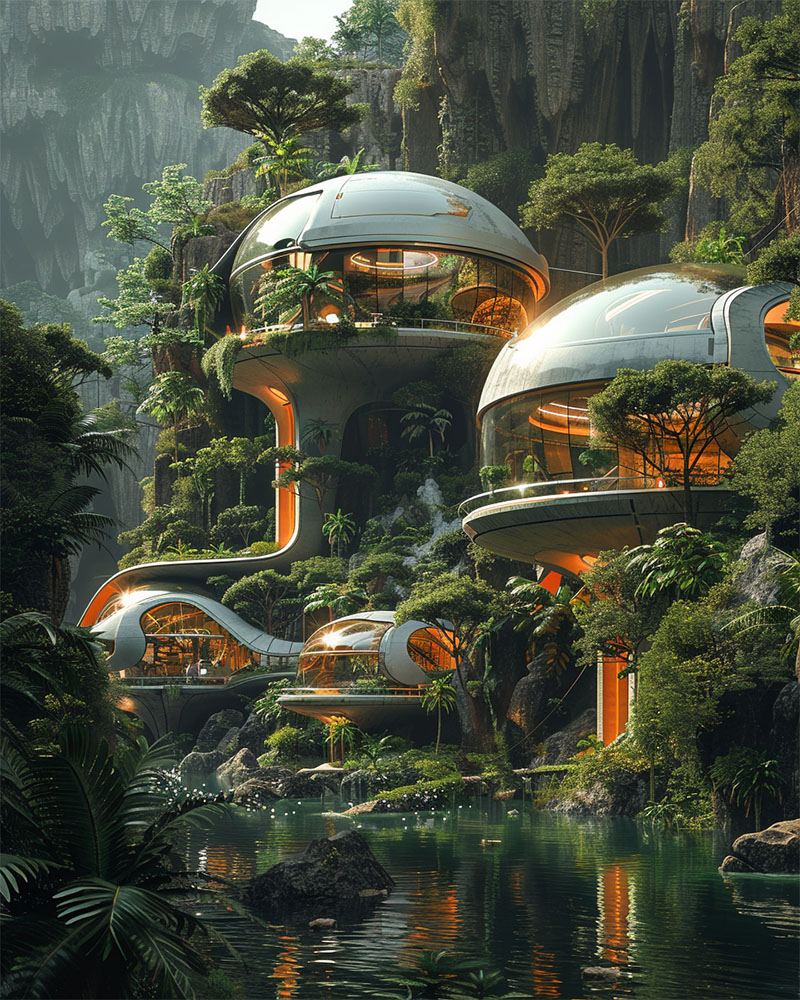
Bubble Haven project prioritizes sustainability at every turn, from the selection of eco-friendly materials to the implementation of green design principles. Its goal is to minimize environmental impact and promote coexistence with nature. In a world where urbanization threatens natural landscapes, Bubble Haven stands as a beacon of hope, symbolizing sustainable living and environmental stewardship.
It is a testament to the harmonious coexistence of architecture and nature, nestled amidst the captivating vistas of South Yogyakarta. This thesis aims to explore Bubble Haven’s design philosophy, construction methods, and ecological footprint. Through meticulous research and analysis, we aim to shed light on the innovative principles that underpin this remarkable project and its potential as a blueprint for sustainable living in natural settings.

At the heart of the Bubble Haven lies a profound commitment to harmony with nature, which permeates every aspect of its design and construction. The organic curvature of the bubble-shaped architecture and the selection of sustainable materials are crafted to minimize environmental impact and foster a deep connection with the natural world.
By examining Bubble Haven’s design principles comprehensively, we aim to unravel the secrets behind its seamless integration into the surrounding landscape. By exploring the innovative construction techniques employed in its creation, we hope to uncover how architecture can coexist harmoniously with nature, enriching both the built environment and the ecosystems that sustain us.




















